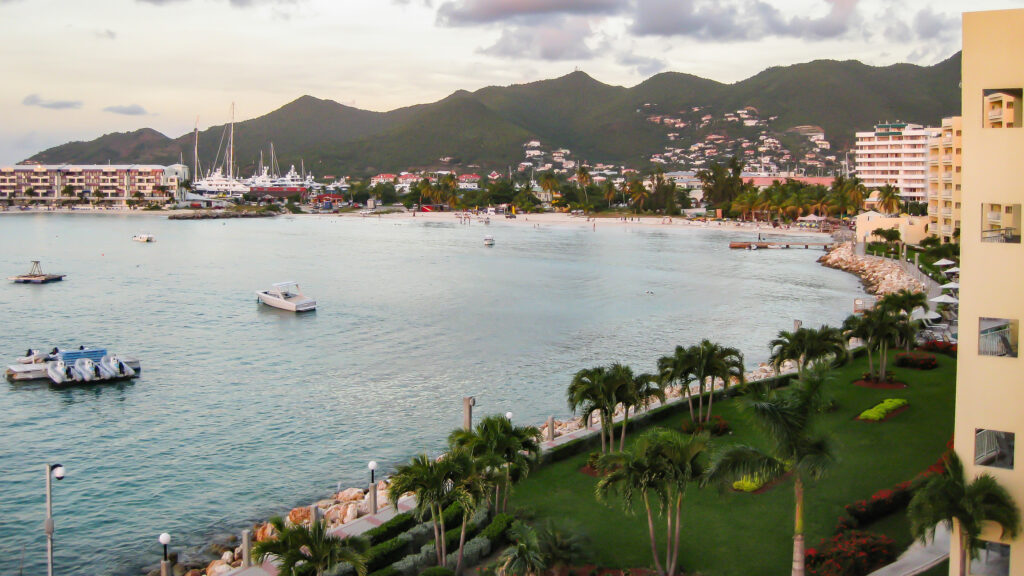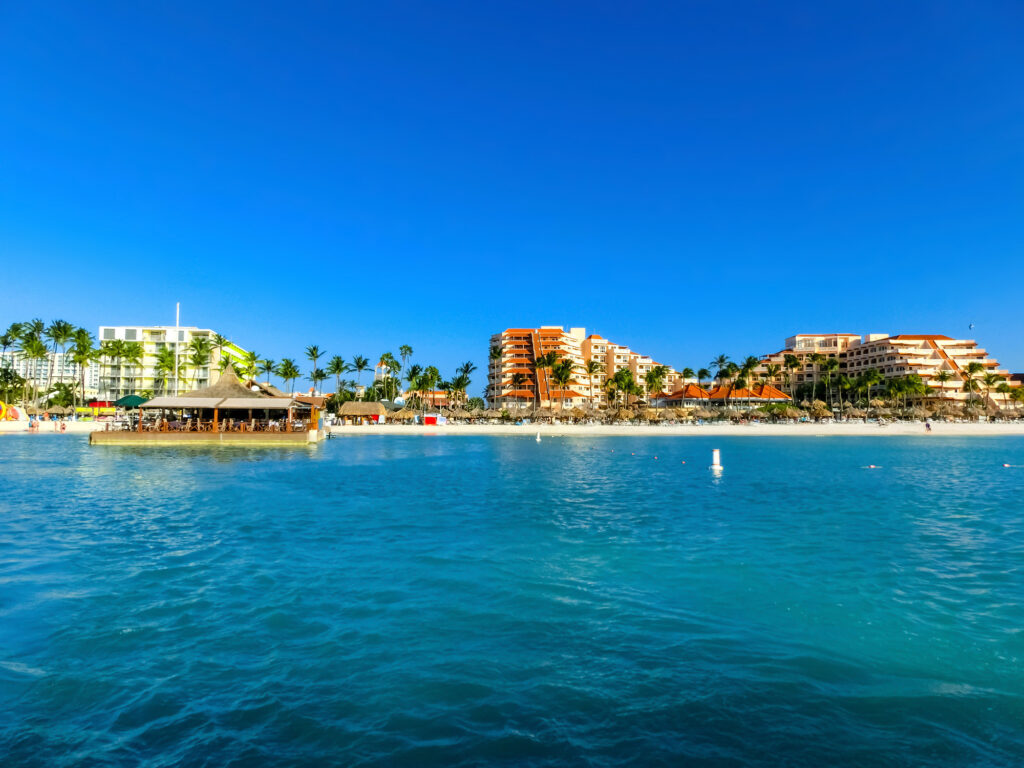New data on Climate Change
Is it already too late?
2019, July 1: For five months and more and certainly since the start of 2019, the lead story in daily television newscasts emanating from the US has been the weather. Winter storms, spring floods and tornadoes have replaced images of out-of-control forest fires, which had replaced images of summer storms and hurricanes. The weather as a topic displaced domestic politics and global affairs from the top of daily television newscasts, fuelling discussion about climate change and global warming. Now the latest scientific reports about sea level rise have created even more discussion but perhaps with more than the usual discomfort and concern.
The doomsday scenario was for sea level rise that would swamp ports in the Caribbean. Even drinking water from wells further inland on coastal plains would become brackish and unfit for human or animal consumption, or for irrigation.
It wasn’t difficult to imagine. A rise in sea levels by just a metre, as was being predicted for the end of this 21st Century, would be disastrous, affecting almost every human being on planet Earth. Hundreds of millions of human beings crammed into coastal cities would be affected directly and indirectly. The magnitude of human displacement coupled with a scarcity of precisely quantifiable data about timing, intensity and extent of the consequences of sea level rise (SLR) made it a difficult conversation to introduce, let alone sustain. The predictions were usually presented as a range of outcomes so perhaps the scientists weren’t so sure anyway. Perhaps?
Were the doomsday scenarios of yesteryear understated?
Could the scourges of climate change and the humanitarian displacement that scientists warned of be even worse than they had predicted?
Could it be later than we think?
Did we, in uncertainty, disbelief and naiveté, procrastinate in the face of science, hoping that the scientists got it wrong?
The rise in sea levels had always been one of the main concerns, ever since climate change became the subject of global study. And by 2013 when the Intergovernmental Panel on Climate Change (IPCC) – the United Nations body for assessing the science related to climate change – published its fifth assessment report, SLR had become one of the most controversial issues.
Many scientists at the time felt that the estimates of SLR that had been presented were too conservative. That report anticipated that global oceans would rise between 52cm and 98cm by 2100, providing there were no major increases or reductions in emission levels. However, a new study projects that actual rise in sea levels may actually be around twice what was previously predicted. The new study rests on recent conclusions that global sea levels could rise far more than predicted, because of faster ice melting in Greenland and Antarctica.
“The paradox is that, as things are getting worse on the ground, political will seems to be failing,” said UN Secretary General Antonio Guterres on a recent trip to New Zealand.
This new report, Ice Sheet Contributions To Future Sea-Level Rise From Structured Expert Judgment1, is authored by Jonathan L. Bamber, Michael Oppenheimer, Robert E. Kopp, Willy P. Aspinall and Roger M. Cooke and delivers results from a different methodology for predicting sea level rise. In observations and findings published in PNAS (Proceedings of the National Academy of Sciences of the US) at www.pnas.org, scientists confirmed that future SLR poses serious threats to coastal communities. There was, however, concern that projecting these threats accurately was ‘problematic’ at a time when “adaptation strategies urgently require quantification of future SLR uncertainties, particularly upper-end estimates.”
Using a different approach called Structured Expert Judgement (SEJ), they gleaned and then combined the knowledge and experience of eight of the most ‘accurate’ of a pool of 22 identified experts on Antarctica and Greenland. From this knowledge base, the researchers came up with collective judgements about the future. Based on this new data, they now argue that the global total for SLR is more than twice the upper value put forward by the Intergovernmental Panel on Climate Change in the Fifth Assessment Report. They are of the opinion that, at current emissions and global temperatures, the world’s seas would very likely rise by between 62 cm and 238 cm by the year 2100 (rather than the 52 cm and 98 cm previously predicted). This, they noted, in a world that had warmed by around 50C, would be one of the worst-case scenarios for global warming.
“… if expected [global] temperature rises up to 20C, Greenland’s ice sheet remains the single biggest contributor to sea-level rise. However, as temperatures go beyond this, the much larger Antarctic ice sheets start to come into play. It’s only at these higher probabilities for 50C that we see those type of behaviours kicking in,” they stated.
Profound consequences for humanity
“We find it plausible that SLR could exceed 2 m by 2100 for our high-temperature scenario, roughly equivalent to business as usual. This could result in land loss of 1.79 M km2, including critical regions of food production, and displacement of up to 187 million people. A SLR of this magnitude would clearly have profound consequences for humanity.”
Some may find the ominous overtones of the previous paragraph (and particularly the last sentence) chilling. This is readily understandable. But, this has been a global issue that we have watched unfold for more than a decade. The consequences are dire and they are not local, lenient or partial.
Disturbingly, much of the loss of land to the sea is expected to be in some of the planet’s important food-production areas. But even as agriculture is threatened, so is commerce. Major global commercial centres including New York City, Miami, London, Mumbai and Shanghai and others are now under serious threat.

Caribbean threat
Most Caribbean capital cities and major towns are built at or about current sea level. So are the ports and much of the infrastructure for the region’s major income-generating industry, tourism. A significant percentage of the population of Caribbean countries and territories therefore dwell at or about sea level in relatively close proximity to the coastline.
One estimate (Strauss & Kulp2) suggests that in 15 (of more than 20 Caribbean territories), not including Cuba and Puerto Rico, more than one million people lived at contours of less than one metre above sea level. And more than 600,000 lived less than half-metre above sea level. Guyana, it was stated, had the highest at risk while, proportionally, The Bahamas faced the greatest threats posed by SLR to land and population.
“Guyana accounts for more than one-third of these totals; Haiti, Suriname, The Bahamas and the Dominican Republic are the other major contributors, in descending order. Among these, however, The Bahamas confronts by far the greatest proportional threat: 32% of land, 25% of population, and 13% of Internet access points are below 0.5 m.” Straus & Kulp (ibid.).
The effects on the Caribbean of a two metre SLR would be exponentially more catastrophic than the one metre scenario. It would be quite devastating to humans and to coastal infrastructure including premium tourism resorts, roads, power plants, agricultural land; even schools, private and public buildings and, in some countries, cemeteries.

A decade ago (following its global climate conference in Cancun, Mexico), the United Nations warned that, with SLR of one metre, there would be loss (or damage) of 21 Caricom airports and the inundation of land surrounding 35 of the Caribbean’s 44 active seaports. With a SLR of two metres, the UN predicted that 307 multi-million-dollar tourism resorts would be damaged or totally lost and 31 airports would be out of service.
Current predictions of SLR reaching levels of up to two metres by or before the end of the current century should, therefore be a loud and disturbing call to action. The question is: is it already too late?
Adaptation
There is no magic wand for halting climate change and the rise in sea levels. As Brown Nicholls Goodwin et al.3 concluded: “If we reduce greenhouse gas emissions and stabilize global temperatures, SLR will continue at a reduced rate for centuries.” This, they explained, is because changes to the ocean and cryosphere (ice), which contribute to SLR, take a very long time to reflect changes in global temperatures.
“Early and aggressive climate change mitigation will be most effective to reduce flood risk, particularly after the 21st century. Even with climate change mitigation, the land area exposed to coastal flooding will continue to increase for centuries. Adapting the coast to cope with rising sea levels is inevitably required. The long-term implications for coastal habitation need to be considered.” (ibid.)
Humankind has little else as options but to adapt to the realities now faced. Resilience, innovation and a dogged determination to cope and survive will be the way of the future. This will, of necessity, take the form of reducing risks and building defences in the following areas:
- Risks to natural and managed ecosystems (g., ecosystem-based adaptation, ecosystem restoration and avoided degradation and deforestation, biodiversity management, sustainable aquaculture and local knowledge and indigenous knowledge)
- Risks of sea level rise (g., coastal defence and hardening)
- Risks to health, livelihoods, food, water, and economic growth in rural area (e.g., efficient irrigation, social safety nets, disaster risk management, risk spreading and sharing, and community-based adaptation) and urban areas (e.g. green infrastructure, sustainable land use and planning, and sustainable water management)
As Bamber, Oppenheimer, Kopp et al 1 stated: “Adaptation measures accounting for the changing hazard, including building or raising permanent or movable structures such as surge barriers and sea walls, enhancing nature-based defences such as wetlands, and selective retreat of populations and facilities from areas threatened by episodic flooding or permanent inundation, are being planned or implemented in several countries.” However, they argued: “Risk assessment for such adaptation efforts requires projections of future SLR, including careful characterization and evaluation of uncertainties (2) and regional projections that account for ocean dynamics, gravitational and rotational effects, and vertical land motion.”
Coping with sea level rise demands study and extrapolations from historical and new data. And, of necessity, innovative methodologies (such as SEJ) for collecting and collating that data will be developed as mankind seeks to adapt and survive. In this regard, the peoples of the Caribbean will need to be resilient, innovative and determined to find regional solutions to a problem that is still approaching but, in many respects, is already here. Those regional solutions yet to be developed could well be what the world needs to deal with sea level rise.
As such, it just may not be too late. []
___________
1 Jonathan L. Bamber (University of Bristol), Michael Oppenheimer (Princeton), Robert E. Kopp (Rutgers), Willy P. Aspinall (University of Bristol) and Roger M. Cooke (Delft University of Technology), Ice sheet contributions to future sea-level rise from Structured Expert Judgment, published in PNAS (Proceedings of the National Academy of Sciences of the USA) [pnas.org],
2 Benjamin Strauss Scott Kulp, Climate Central, Princeton, NJ , Sea-Level Rise Threats in the Caribbean Data, tools, and analysis for a more resilient future, [Inter-American Development Bank February 2018]
3 S. Brown. R. J. Nicholls, P. Goodwin, I. D. Haigh, D. Lincke, A. T. Vafeidis, J. Hinkel , Earth’s Future: Quantifying Land and People Exposed to Sea-Level Rise with No Mitigation and 1.5°C and 2.0°C Rise in Global Temperatures to Year 2300 [AGU100 Advancing Earth and Space Science].






